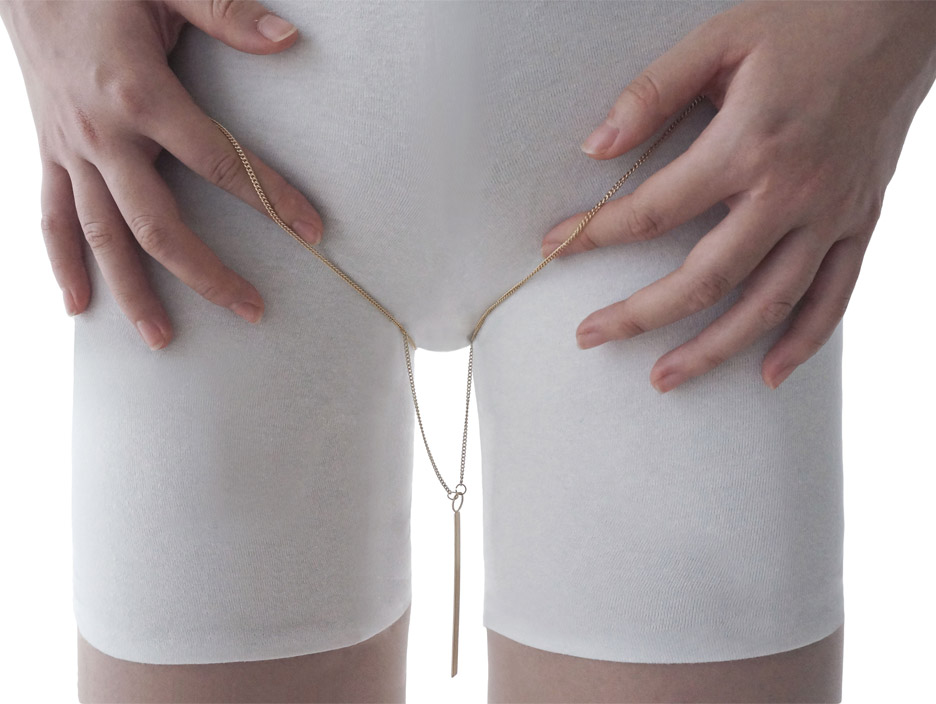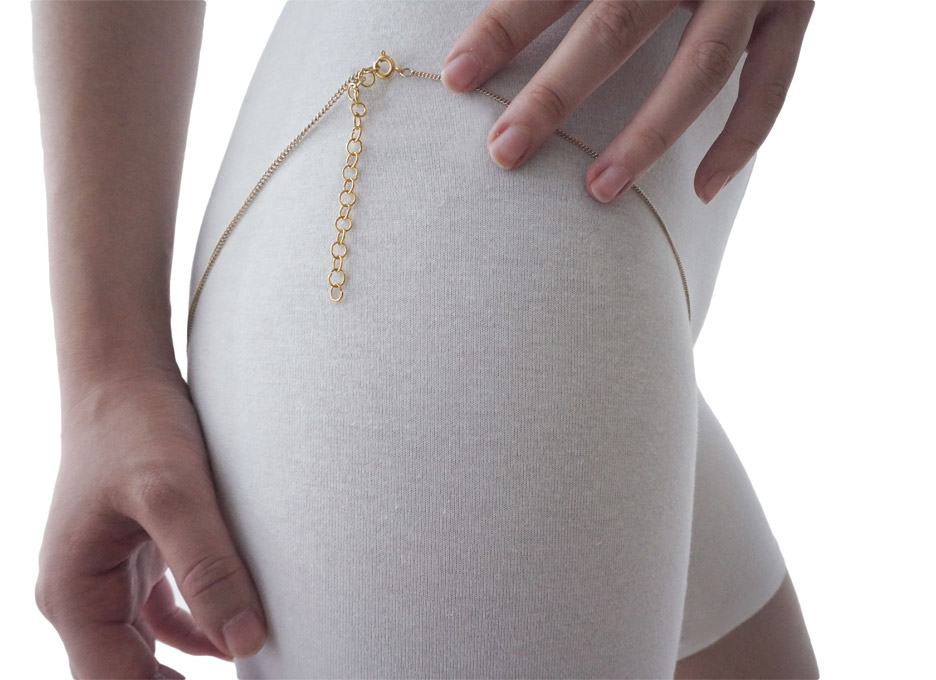Soo Kyung Bae's jewellery draws attention to the "thigh-gap trend"
These jewellery pieces by Singapore designer Soo Kyung Bae are intended to spark a debate about unrealistic body-image expectations portrayed by the media.
Bae, a final-year industrial design student at the National University of Singapore, created the TGap Jewellery pieces to draw attention to the area between a woman's thighs – often referred to as a thigh gap.
The thigh gap has become considered a beauty ideal among young people in the Western world, sparking an internet trend for teenage girls and young women measuring the distance between the tops of their inner legs, then posting the results on social media.
"Thigh gap represents one of the first few trends regarding body ideals the media has popularised," Bae told Dezeen. "It clearly demonstrates media's power on influencing one's perception of body image."

"The jewellery pieces take the thigh-gap trend to another level, the pieces are created in hopes of sparking questions," she added. "If we let the media to keep popularising such unrealistic body ideal, will this eventually become reality?"
Each of the pieces were created from 18-karat gold-plated sterling silver, and are marketed on a website.
The online store is intended to show the media's ability to influence people to believe or follow a trend.
When a user reaches the site, a popup leads them to a platform that reveals the actual story behind the collection.
After the website was launched on 22 March 2016, Bae said she received a lot of shocked, enraged, and confused comments. But as the story behind the website was revealed, people were "appreciative" of her attempt to bring awareness to the issue.
"By using outrageous products, I hope to bring a provocative jolt that leads us to ponder and reflect upon what we are like as a society and the absurd things we value and obsess over – as well as how this creates unnecessary pressure for women and girls," she said.

"One can use design to spark debate and reflection, to be a catalyst for people to decide for themselves about their position on this matter," she added. "I hope it leads to more people-centred, people-loving conclusions, but it is for the audience to decide for themselves."
Designers are increasingly addressing issues surrounding body image. Debora Dax aimed to highlight the subject by creating underwear adorned with artificial pubic hair and a skirt padded to look like love handles, while Imme van der Haak printed photos of people onto silk shrouds so that the wearer's image is overlaid with someone else's face and body.
Earlier this year, the iconic Barbie doll became available in several different body types, including a more full-figured version for the first time.
Like Dezeen on Facebook for the latest architecture, interior and design news »